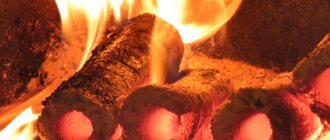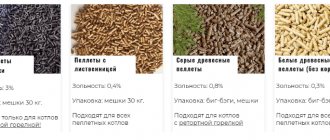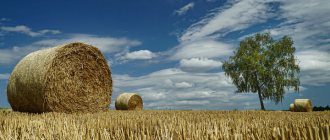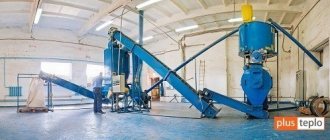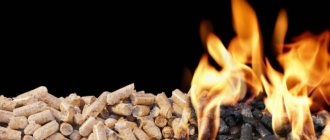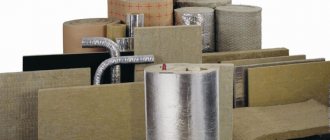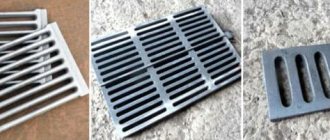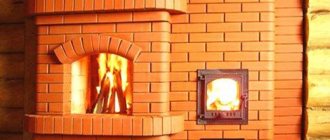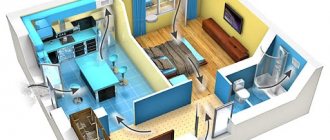December 31, 2022
Pellets are small-sized (diameter 4–8 mm, length 0.5 to 7 cm) cylindrical wood pellets, manufactured using special equipment and intended mainly for heating. In Western European countries, pellets have long been successfully used for heating cottages and country residences. In our country, this product became popular not so long ago. One of the main advantages is the environmental friendliness of the raw materials. An important advantage and ability to use pellets in automated systems: loose granules are poured into a special tank and fed into the boiler in an automated way, without any human participation in this process. This is a significant advantage over other types of solid fuel: chopped wood, coal, briquettes, which regularly need to be added manually to the stove to maintain the combustion process. Fuel pellets retain heat well, which means that your house or apartment will always be warm and comfortable.
Fuel pellets
A low degree of humidity contributes to the rapid combustion of raw materials, high efficiency and heat transfer, and the high bulk density of pellets simplifies transportation and storage, and increases the operating time of the boiler on one load.
What are pellets?
Pellets
are a granular type of solid fuel, cylindrical in shape, made from compressed waste from agricultural production and the woodworking industry. The main materials for the manufacture of fuel pellets are:
- sawdust, wood chips, bark, slabs of coniferous and deciduous (the best option) wood species;
- peat;
- sunflower husks (the most common solution), rapeseed (the best option), straw of various grain crops, corn, husks, cake and much more;
- charcoal;
- household waste.
The base binder is a substance of plant origin - lignin, a natural polymer contained in almost any plant, capable of being plasticized during granulation under the influence of a sufficiently high operating temperature.
Pellet classification
The main regulatory document predetermining the production of pellets is the European Union standard EN 14961-2, adopted in January 2011, on its basis an international quality certificate EN Plus is issued. There are three classes of granular fuel:
- ENPlus-A1 – best premium quality, diameter up to 8.00 mm, ash content up to 0.70%, another name is “white granules”;
- ENPlus-A2 – with ash content up to 1.50%, also called industrial granules, can consist of mixed wood species;
- EN-B – standard quality, with ash content up to 3.00%, an alternative name for agropellets.
In terms of cost, the most expensive pellets are ENPlus-A1 class, the cheapest are EN-B class, it is better not to take substandard fuel.
Basic parameters of pellets
Pellets for heating are granules of white or shades of brown, with a length from 10.00 to 30.00 mm, a diameter of 6.00 and 8.00 mm, less common fuel with a diameter of 10.00 mm, the maximum diameter of the granules is 25.00 mm. The darkening of pellets is associated with the presence in the structure of the material of various non-combustible residues (dust, earth, and a number of others).
The main parameters of pellets are:
- ash content (the lower, the better and the less ash, so the boiler will have to be cleaned much less often);
- humidity;
- calorific value (ENPlus-A1 – 18.0 MJ/kg, ENPlus-A2 – 18.0 MJ/kg, EN-B – 15.0 MJ/kg).
- total length;
- degree of density;
- diameter;
- bulk mass;
- abrasion class.
Other materials
Russia has vast deposits of peat, which is suitable for granulation. Peat pellets and briquettes are made using approximately the same technology as wood. The calorific value of peat is high - up to 21 MJ/kg, however, the ash content of such granules is increased - up to 5%. This fuel is suitable for industrial and municipal boilers. In Russia, granulation and briquetting of peat has mainly 2 prospects: providing heat and electricity to non-gasified areas and exporting granules to Scandinavian countries. In Northern Europe, peat is recognized as a partially renewable raw material, and its use in the energy sector is encouraged from above.
Granulation of waste paper is a fairly new but promising industry, since this type of raw material does not require expensive drying complexes. Granules made from paper and cardboard (and in some countries granulation of old banknotes has been established) produce a large amount of heat and have a tiny percentage of non-combustible residues.
Chicken and horse manure pellets are more expensive than wood pellets. It is a valuable and nutritious fertilizer for soils. Horse manure pellets sell for around €1.25 per kilogram. Processing manure and droppings into fertilizers is not only profitable, but also a necessary step, since storing such waste directly harms the environment.
The same can be said for the processing of hydrolysis lignin, a by-product of hydrolysis plants. In Russia, there is only one lignin granulation plant in the Arkhangelsk region, and meanwhile its reserves in the country amount to tens of millions of tons. In terms of calorific value (more than 21 MJ/kg) and ash content (less than 3%), lignin is an excellent raw material for pellet production.
Expanding the raw material base for the production of fuel pellets makes it possible to benefit from the disposal of huge amounts of biological waste, as well as solve environmental problems associated with their storage. Switching from fossil fuels to environmentally friendly fuels reduces emissions of harmful substances into the air. The creation of new pellet and briquette production creates new jobs in the agricultural industry and helps its overall development.
Pellet manufacturing technology
The production of pellets consists of pressing waste that has been previously dried to a certain moisture content and crushed to a given fraction under a pressure of about 300 atmospheres. At the same time, the use of glue and other additives is prohibited (sometimes unscrupulous businessmen add sand and other non-combustible impurities to them to increase the weight of the granules, and synthetic polymers to ensure adhesive properties).
Main stages of pellet production:
- Grinding. The raw material enters the crusher and is crushed to a given fraction;
- Drying. The resulting raw material is dried to the moisture percentage specified by the technology (about 10% plus or minus 2%);
- Pressing. The dried raw material enters a press granulator, in which it is pressed into granules of a given length and diameter. As a result of compression, friction, and adiabatic processes, the temperature can reach 100°C Celsius, as a result, thermal energy is generated that softens lignin and the particles stick together into granules. This process is called pelletization;
- Cooling. To ensure the strength of the fuel granules, the pellets are cooled after pressing;
- Packing and sending to the consumer.
In some cases, water treatment and additional grinding are performed before pressing; everything directly depends on the type and quality of the raw materials from which the granules are made. Pressing is carried out in molds, ring-type dies using rotary rollers (rollers), which press the raw material into cone-shaped dies located on the matrix. On the other hand, the resulting granules are cut with special knives. After cooling, the pellets are sieved and small particles are sent for recycling. Closed cycle technology is virtually waste-free; only non-combustible impurities are removed. In order to make one ton of pellets, three to five cubes of wood waste are needed. The raw material is compacted approximately three times. To prepare one ton of pellets you need from 30.00 to 50.00 kW per hour.
Necessary machines for the production of pellets
Equipment for the production of sawdust pellets includes:
- crushers (chopping machines) for grinding the raw materials used to a given fraction;
- dryers to ensure the required percentage of humidity of the initial, base raw materials;
- hammer mills (in some cases they are replaced by flaring machines, disintegrators, everything depends directly on the characteristics of the feedstock), make it possible to obtain raw materials with a fraction of up to 4.00 mm;
- screw mixers (used when using overdried raw materials with a moisture content of less than 8.00%, by dosed supply of steam or water);
- presses (differ in the type of matrix used, which can be flat or round).
Dryers, in turn, are divided into:
- principle of operation (can be drum or belt (cost more, but are more productive and safer to use));
- drying technologies (using flue gases, water vapor or hot air);
- the fuel used (gas, wood waste, coal, etc.).
To burn pellets, special equipment is used - a pellet boiler.
.
The optimal solution in terms of price/quality/performance ratio on the Russian market is heating appliances from the Polish manufacturer Metal-Fach, including boilers from the SD DUO
,
SD DUO BIO
,
SMART
,
SMART EKO
,
SEG, SEG BIO
.
They have a steel heat exchanger (P265GH steel with a thickness of 4.00 to 6.00 mm is used for production), an efficiency of over 90%, an innovative, modern type controller FL 310LGRTC
, with continuous logic and PID control, as well as an upper combustion chamber and a retort type burner.
Also worthy offers are:
- domestic boilers created in Krasnoyarsk, ZOTA
Pellet
series ; - joint development of the Russian-Polish company Vulkan
, the
EKO
; - pellet boilers from the legendary Italian company FACI
Caldaie,
FACI SSL/SSP
.
You can purchase pellet boilers in a wide range, get the necessary advice, order installation, warranty and post-warranty service in Krasnoyarsk from the Kras-Kotel company.
Some pros and cons
- Combustion is supported by pellets, a fairly inexpensive type of fuel.
- They have a high level of efficiency, which brings their characteristics closer to gas boilers.
- Fuel is supplied to the burner and the temperature is maintained automatically.
- Storing pellets is not difficult, since they are packaged in bags (often thirty kilograms each) and only need a dry room.
- When burned, they leave behind small amounts of environmentally friendly ash.
- The pellet appliance provides the house with both hot water and a comfortable, constant temperature regime.
- They have a smart control system; some system models are designed for remote control.
- Pellet equipment for autonomous home heating is safe and does not require registration with regulatory authorities.
When deciding to buy a good pellet boiler, it is worth paying attention to some disadvantages
- Installation and connection to the home heating system must be carried out by qualified specialists.
- Pellet production is not yet well organized, which may result in fuel shortages.
Pallet boiler
How to distinguish high, premium quality pellets from substandard fuel?
When purchasing pellets, you need to pay attention to:
- the surface of the material must be smooth, shiny, without signs of deformation (swelling and microcracks);
- diameter (this parameter is established by the standards, the minimum value is 4.00 mm, the maximum is 10 mm, also standard are fuel pellets that have a diameter of 6.00 and 8.00 mm, please note that a pellet boiler operates on pellets of a certain fraction);
- length (this parameter should be about 20.00 - 30.00 mm, this is the optimal value, although the equipment can work on pellets with a length of over 50.00 mm);
- smell (the granules should have a slightly sweet smell of freshly prepared glue, this is a clear sign of excellent quality);
- color (it is important to remember that the highest quality pellets are white or slightly cream-colored, agropellets are predominantly dark, and in wood pellets, dark color indicates that bark, other impurities have been added, or wood species have been mixed);
- dust (there should be a minimum amount of dust on pellets, so it is better to buy fuel in sealed packaging);
- impurities (the presence of non-combustible impurities in the granules themselves can only be checked by burning them and determining the residue in the form of solid particles).
Conditions of storage and use
When purchasing a large batch of pellets, you need to take care of where they are stored. When stored indoors, they should not be placed near open sources of fire. It is also necessary to protect the material from its worst enemy - dampness.
How to store pellets if there is no space in the house? Closed bags/packages can be placed outside under a canopy. However, this option is undesirable - when it rains, the risk of the packaging getting wet and irreversible damage to the fuel increases.
A few words about how to properly heat a solid fuel boiler with pellets. This requires a burner, which can be purchased separately and installed on the boiler literally within half an hour. The operation of such a tandem is extremely simple - the user will need to fill the hopper with fresh pellets from time to time and clean out the ash. The temperature balance is controlled using the control panel.
Advantages and disadvantages of solid fuel in the form of fuel pellets
The main advantages of pellets:
- environmental cleanliness (when burning this type of solid fuel, carbon dioxide is released in volumes equal to the volumes formed during the natural decomposition of various wood wastes);
- fire safety (pellets are less susceptible to spontaneous combustion than other types of solid fuel);
- optimal humidity (8-10% versus 30-50% for logs) and density (one and a half times higher than that of firewood);
- remarkable calorific value, one ton of fuel pellets is enough to produce 3500 kW/h of thermal energy;
- constant and very high bulk density, which facilitates logistics, loading and transportation of pellets;
- the uniformity of the structure in shape and size makes it possible to automate all processes of loading and loading and combustion of fuel pellets in boilers.
Cons of pellets:
- high cost of solid fuel at the present stage;
- to burn pellets you need a special pellet boiler equipped with automation, which also costs more;
- the volume of supply on the market is low, the situation will improve over time, but pellets must be purchased in reserve and stored in warehouses, preventing excess moisture from entering.
Heating a private house with pellets: pros and cons
A solid fuel pellet boiler for a home with automatic fuel supply, like any other heating option, has both its advantages and disadvantages.
Consideration of the pros and cons helps to make the most reasonable decision regarding the advisability of equipping a boiler room with wood pellet equipment. The disadvantages are the following:
- Dependence on pellets – a few years ago, good quality pellets were difficult to obtain, which significantly affected the cost of fuel. Today, purchasing pellets of plant or wood origin is not difficult. Refilling a pellet boiler lasts for several hours, days or even months, depending on the chosen model. The user is required to calculate the operating time and purchase the necessary fuel in advance.
- High installation cost. Another disadvantage pointed out by opponents of pellet equipment is its high cost and expensive repairs. Today, the price of equipment is gradually declining due to high market saturation.
The reasons for purchasing pellet equipment are:
- Economical - fuel costs are slightly higher than for a gas boiler, but if you take into account the cost of obtaining permits, the need to prepare design documentation, and pay for gas pipeline installation, the difference becomes not so obvious. Economical pellet boilers for home use less raw materials than convection and gas-generating solid fuel units. Heating costs are also lower compared to an electric boiler.
- Simple installation requirements - the boiler is installed fairly quickly. Combined systems with an integrated fuel tank simply need to be connected to the power supply network and a chimney installed.
- Versatility - most modern models manufactured by domestic manufacturers are capable of using, in addition to pellets, firewood, coal, wood waste, and after replacing the burner, can be converted to use liquid fuel.
- Backup heat sources - an automatic pellet boiler, often has a built-in heating element for heating the coolant. If the solid fuel runs out, the boiler automatically switches to using electricity and continues to heat the house until the pellets are refilled.
Having weighed all the pros and cons of purchasing pellet equipment, many buyers come to the conclusion that it is advisable to purchase a heat generator of this type.
Pellet cost
Let's take the initial data:
- the average cost of industrial pellets in the Krasnoyarsk Territory as of December 2015 is 3,500 rubles per ton (3.50 per kilogram);
- the price of birch firewood is 1,300 rubles per cubic meter, in terms of tons (a cubic meter of dry birch firewood equals 650 kg of weight) is 1,846 rubles per ton (1.85 rubles per kilogram);
- the calorific value of birch firewood is 10 MJ/kg;
- The calorific value of wood industrial pellets is 18 MJ/kg.
In order to obtain 100 MJ of thermal energy, you need 10 kg of firewood (100/10), that is, 18.50 rubles, or 5.5 kg of pellets (100/18), that is, 19.44 rubles. The difference in cost is 1 ruble per 100 MJ. Moreover, it is necessary to note the undoubted advantages of pellets with an ash content of 1.5% over firewood with an ash content of 10%, the difference is obvious. It should be taken into account that the pellet market is growing dynamically, and with an increase in supply, the price will undoubtedly decrease. By the way, pellets can be made independently from agricultural or wood waste. Read below how.
Agropellets
One of the most popular types of agricultural pellet raw materials is straw from various agricultural crops (especially wheat and rapeseed). In terms of energy potential, this material is not much inferior to wood: up to 16 MJ/kg versus up to 18.4 MJ/kg. Straw is a renewable source of fuel; burning straw does not change the balance of nitrogen dioxide in the air: during growth, it consumes the same amount of CO2 as it releases during combustion. Straw pellets are also used not only for heating, but also as bedding for animals in livestock farms and stables.
A type of raw material similar to straw is reed, while its higher calorific value is 19 MJ/kg, and its ash content is approximately 4%. Such raw materials are very cheap; they are collected using swamp harvesting and grinding machines.
Sunflower husk is one of the most promising materials for agropellets. Sunflower pellets have an ash content of 3%, and give off almost as much heat as brown coal - up to 21 MJ/kg. Ash after burning husks is a valuable fertilizer. Buckwheat husks, millet husks, and rice husks are also granulated.
We make pellets with our own hands
You can make pellets with your own hands. To do this we need to assemble a granulator. It is necessary to take wood or agricultural waste, grind it to a particle fraction of 30.00-50.00 mm, dry it to a moisture content of 15.00%, grind it to particles with a fraction of 2.00 mm and place it in a granulator. In the case when you use agricultural waste, such as sunflower husks, rapeseed or sawdust, as the initial, basic raw material, you do not need to crush anything. But if branches, bark, or various substandard lumber are used, it is necessary to crush, although the use of a granulator allows you to omit this operation. The dryer is made from an ordinary metal barrel. It is better to use a granulator with a flat matrix (a cylindrical matrix in the shape of a perforated drum is a more complex solution) and a perforated disk with outlet holes in the shape of a cone with a diameter of 8.00-10.00 mm, this is the optimal solution. You need to buy a matrix and rollers (the production of spare parts is carried out by manufacturers of equipment for the production of animal feed). The matrix is also made independently, from steel with a thickness of at least 20.00 mm, and gears are used as rollers. You will also need a gearbox and an electric motor with a power equal to or greater than 15.00 kW. It is necessary to ensure rotation in the range of 60-120 revolutions per minute. The shaft can be installed both horizontally and vertically; the main thing is to make tanks for loading the raw materials and subsequent unloading of pellets.
Stages of making pellets:
- we take or make a matrix, make a hole in the center for the gearbox and always a groove intended for landing;
- gears (rollers can be used, the width of which must match the width of the working surface of the matrix used), are put on the shaft strictly perpendicular to the axis of the installed gearbox shaft using a conventional coupling;
- the cylindrical body is welded from sheet steel or steel pipe, taking into account the dimensions of the matrix, which should rotate easily and freely, providing holes for unloading pellets and a tray also made of sheet steel or steel pipe, the bottom and top of the structure can be made detachable to facilitate maintenance;
- the output shaft of the selected gearbox is strengthened in the lower part of the machine using a coupling and always bearings;
- the matrix, as well as the rollers, are installed in a cylindrical body;
- the resulting structure is mounted on a frame made of a channel or an ordinary angle and is rigidly fastened; all that remains is to install the engine and connect the output shaft to the installed gearbox.
The future belongs to pellets and pellet boilers. Kras-Kotel specialists will help you make the right choice of pellet boiler, taking into account all your wishes and the characteristics of your home.
Share on social media networks:
Maintenance
Heating a home using pellet boilers requires little maintenance.
They usually have an open heating system, so you need to monitor the water level in the system. You can automatically supply water replenishment to the heating system. The boiler itself must be cleaned of soot, especially the heat exchanger jacket, as this affects the consumption of pellets. Smoke exhaust pipes need to be cleaned. This does not take much time, and the moment when cleaning is necessary can be determined visually by looking at the water jacket, or if the consumption of pellets has increased. The deadline is when the boiler begins to smoke into the room.
If pellets are supplied using a rigid auger, then it is necessary to periodically clean this system from dust that accumulates in the air supply channels.
